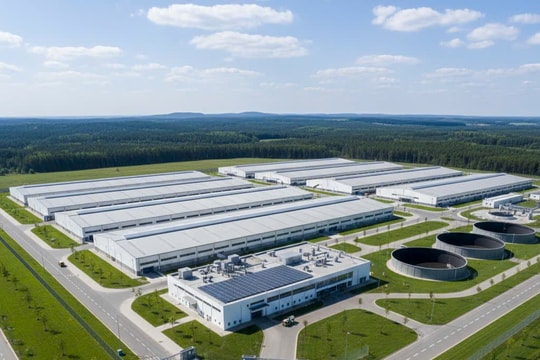
Optimizing Transportation and Energy Use
One of the key solutions in green logistics is optimizing transportation activities to reduce emissions and energy consumption. The use of alternative fuel vehicles such as electric, hydrogen, or compressed natural gas (CNG) is being adopted by many businesses. However, the biggest current challenge lies in the high initial investment costs and limited supporting infrastructure.
Additionally, implementing Transport Management Systems (TMS) helps optimize routes, shorten travel distances, and reduce fuel consumption. These systems use real-time data to adjust transportation plans, thereby minimizing environmental impact and improving operational efficiency.
Sustainable Warehouse and Supply Chain Management
Developing distribution centers and warehouses that meet LEED (Leadership in Energy and Environmental Design) standards is a significant step toward reducing energy use and greenhouse gas emissions. Modern warehouses are equipped with LED lighting systems, motion sensors, and high-efficiency HVAC systems that significantly cut energy usage.
Moreover, using eco-friendly packaging materials and reusing containers contribute to reducing waste and disposal costs. Many businesses are also adopting a circular economy model within the supply chain, promoting recycling and reuse of materials, thereby lowering environmental impact.
Collaboration and Innovation in the Supply Chain
Close collaboration among supply chain partners is a key factor in successfully implementing green logistics. Sharing data and information on energy consumption, greenhouse gas emissions, and sustainability indicators enables stakeholders to make accurate and timely decisions.
Technological innovation also plays a crucial role in advancing green logistics. The application of artificial intelligence (AI), machine learning, and blockchain enhances forecasting capabilities, optimizes operations, and ensures transparency throughout the supply chain.
Case Study: Walmart
Walmart is one of the pioneers in implementing green logistics. The company has set a goal to reduce or avoid one billion tons of greenhouse gas emissions in its global supply chain by 2030 through its Project Gigaton initiative. To achieve this, Walmart has launched various efforts such as adopting renewable energy, optimizing transportation, and working with suppliers to improve environmental efficiency.
Specifically, Walmart has invested in alternative fuel vehicles and adopted measures like maximizing vehicle loads and optimizing delivery routes. These efforts not only reduce operational costs but also enhance brand image in the eyes of consumers.
Expert Commentary
"Transitioning to green logistics not only ensures compliance with environmental regulations but also creates sustainable competitive advantages. Businesses that lead in this space have the opportunity to dominate the market and build a strong, positive brand image."
— Elizabeth Fretheim, Director of Business Strategy and Sustainability, Walmart
Source: Inbound Logistics

"Pressure from consumers and investors is driving companies to shift toward green logistics models. Investing in environmentally friendly technology and infrastructure is not just a social responsibility but also a smart long-term business strategy."
— Patrick Penfield, Assistant Professor of Supply Chain Practice, Syracuse University
Source: Inbound Logistics
Developing green logistics is a long journey that requires consistent commitment and effort from businesses. Applying technological solutions, investing in eco-friendly transportation, and optimizing operational processes will help enterprises not only reduce environmental impact but also improve business performance and build a positive brand image. In the context of escalating climate change, green logistics is not merely a trend but a mandatory requirement for sustainable enterprise development.


.jpg)


.jpg)

.jpg)
.png)
.png)
.png)


.png)
.png)






.png)

